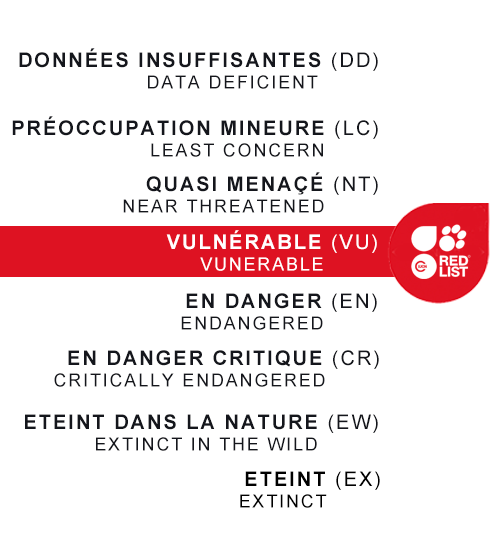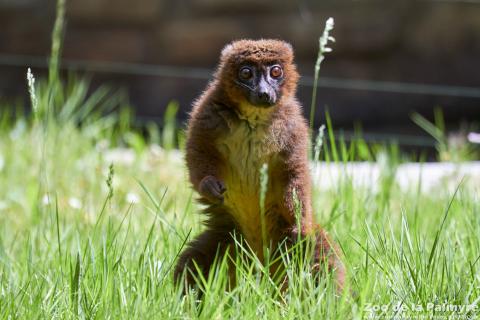Red bellied lemur

Red bellied lemur

-
Class
Mammalia -
Order
Primates -
Familly
Lemuridae
-
 40cm
40cm -
 2kg
2kg -
 4 months
4 months -
 1
1 -
 15-20 years
15-20 years
-
Diet
frugivorous (fruits, flowers, nectar, leaves) -
Habitat
tropical rainforest -
Range
eastern Madagascar -
 This species is part of a European Breeding Program
This species is part of a European Breeding Program
-
Population in the wild
En diminution -
IUCN REDLIST status


Red bellied lemurs live in small family groups consisting of one adult pair and their offspring. Male and female are sexually dichromatic: while the female has a creamy-white colored belly, the male has an entirely reddish-brown ventral coat and patches of white skin beneath the eyes.
Red bellied lemurs mainly feed on fruits, leaves and nectar of more than 70 different plant species. Because of their diet rich in fruits, they are important dispersers, scattering the seeds as they feed or passing them intact in their feces while they move through the forest. They are also important pollinators, transferring pollen between flowers on their fur. Invertebrates may also be a significant part of their diet at certain times of the year: some studies have shown that they use the toxic secretions of millipedes for self-medication.
Unlike other Eulemur species who are strict seasonal breeders, female red bellied lemurs give birth almost all year-round, excluding February and the period from May to July. They usually give birth to one young, but here again the species distinguishes itself since twin births are more frequently observed. The infant is alternately carried by the female and the male during its first month, then it is exclusively carried by the male until the age of about 3 months.
The species is cathemeral, animals being active both day and night. In recent years, the global population has declined significantly due to the destruction of its habitat (slash-and-burn agriculture and illegal logging) and hunting. Restricted to intact forest patches, Red bellied lemurs seem much rarer than other sympatric species of Eulemur.






